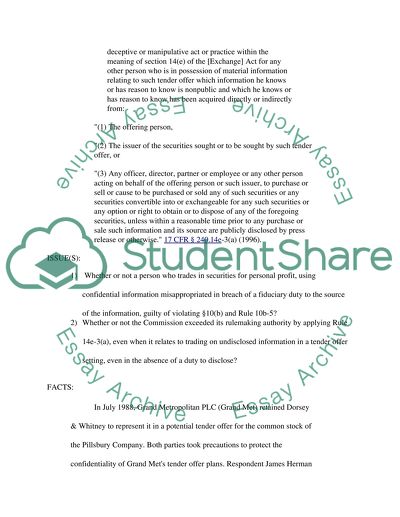Analysis of United States v. James Herman OHagan Case Study. Retrieved from https://studentshare.org/law/1524395-case-analysis-college-essay
Analysis of United States V. James Herman OHagan Case Study. https://studentshare.org/law/1524395-case-analysis-college-essay.


